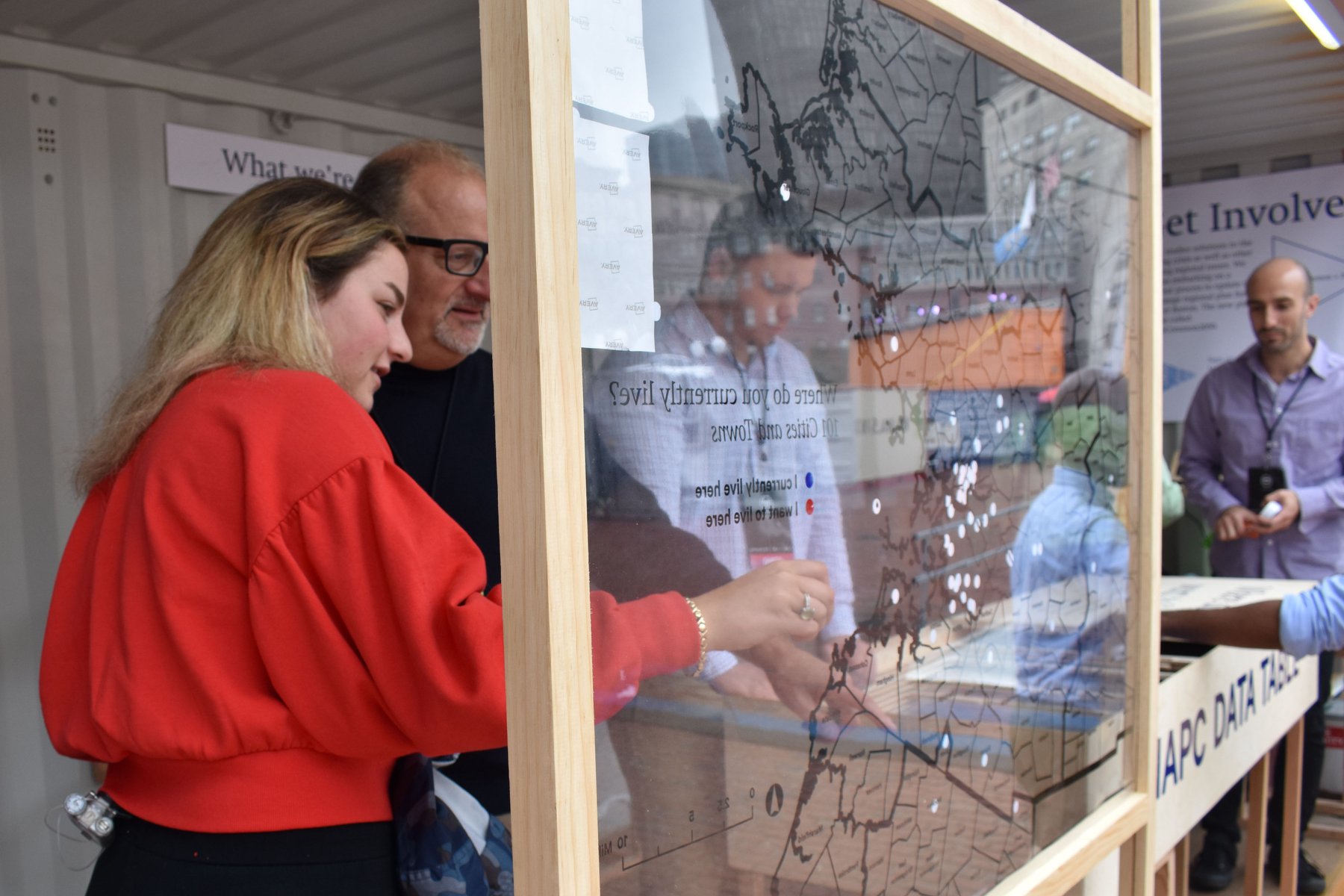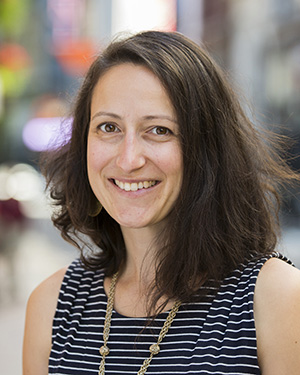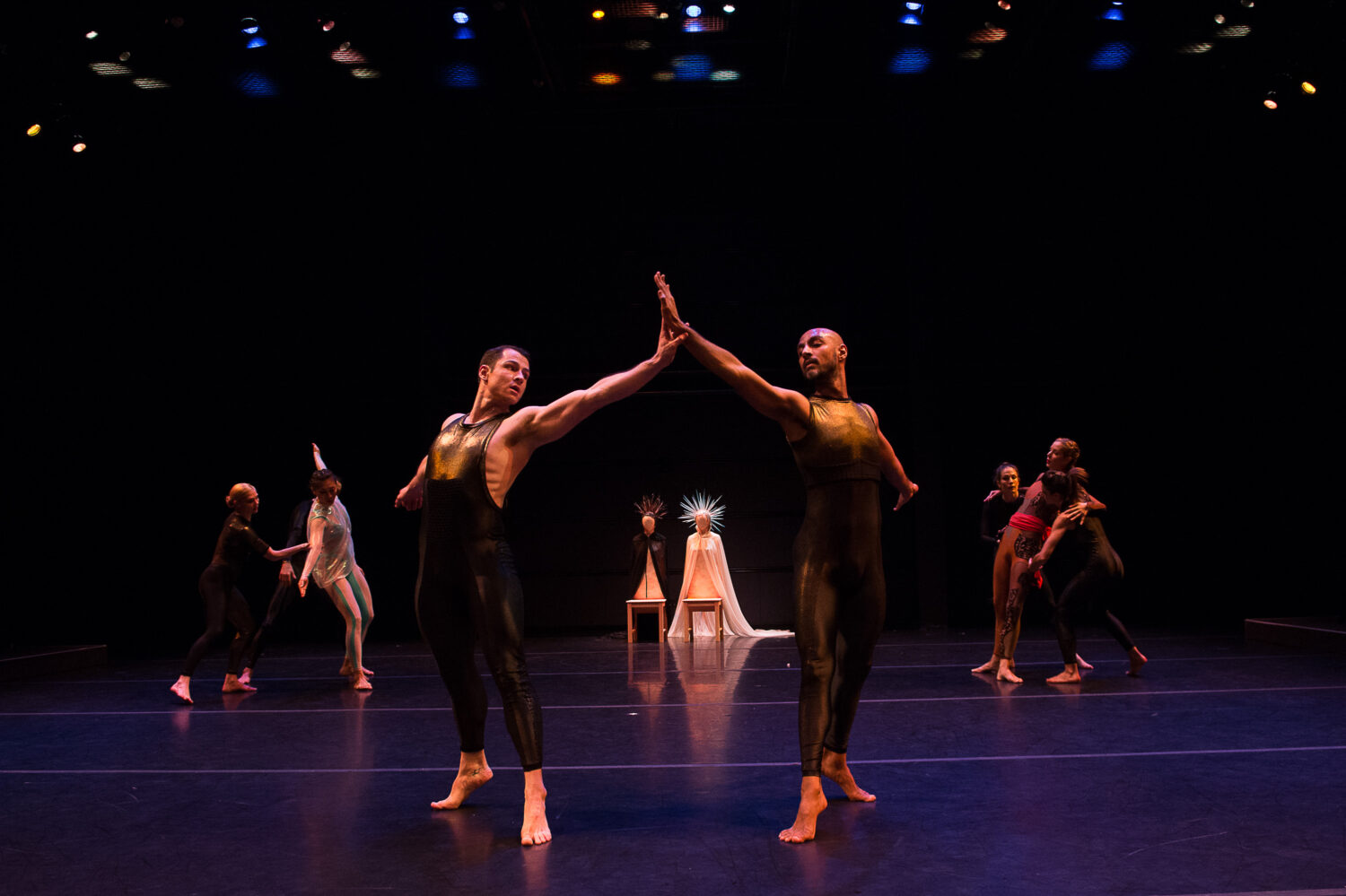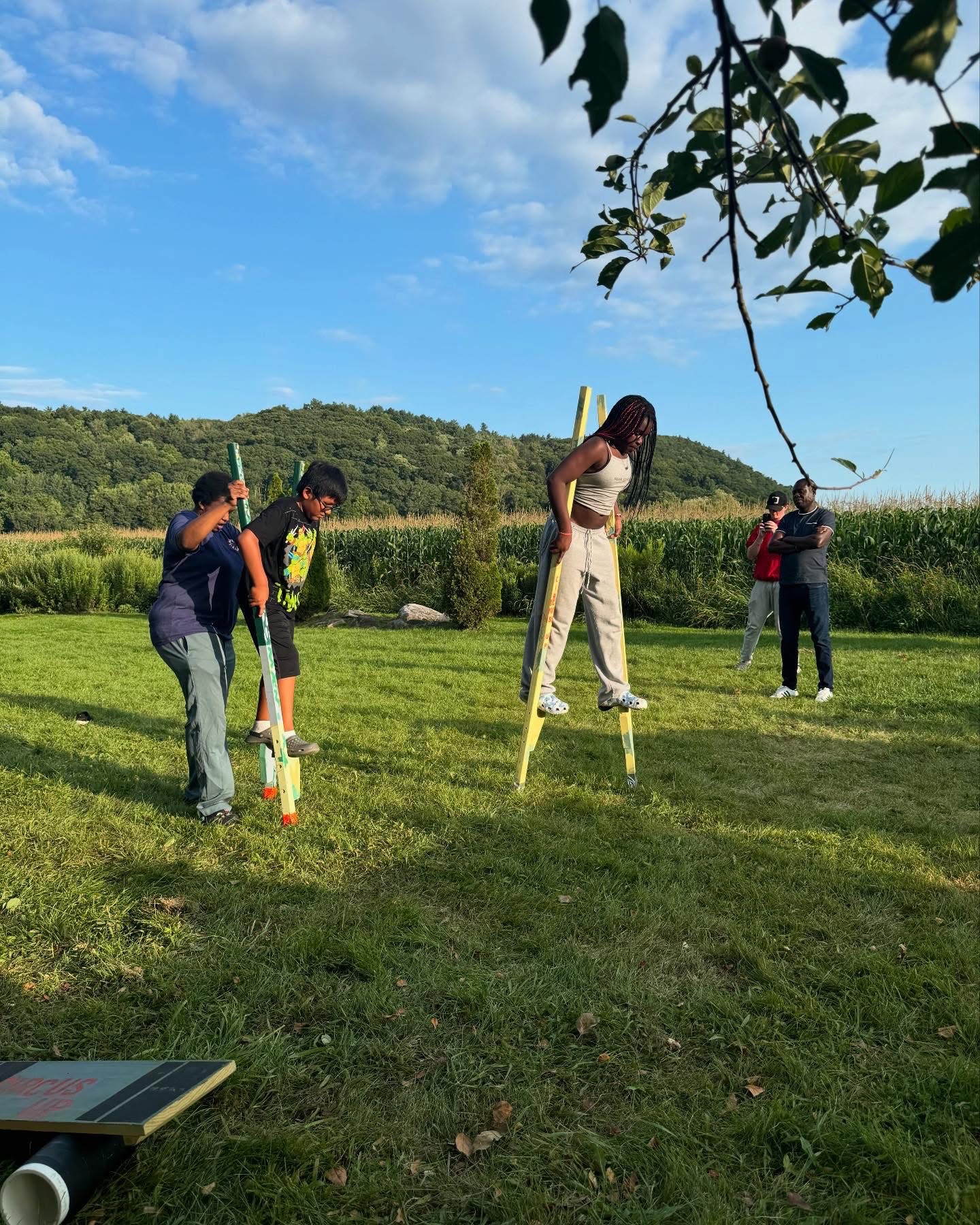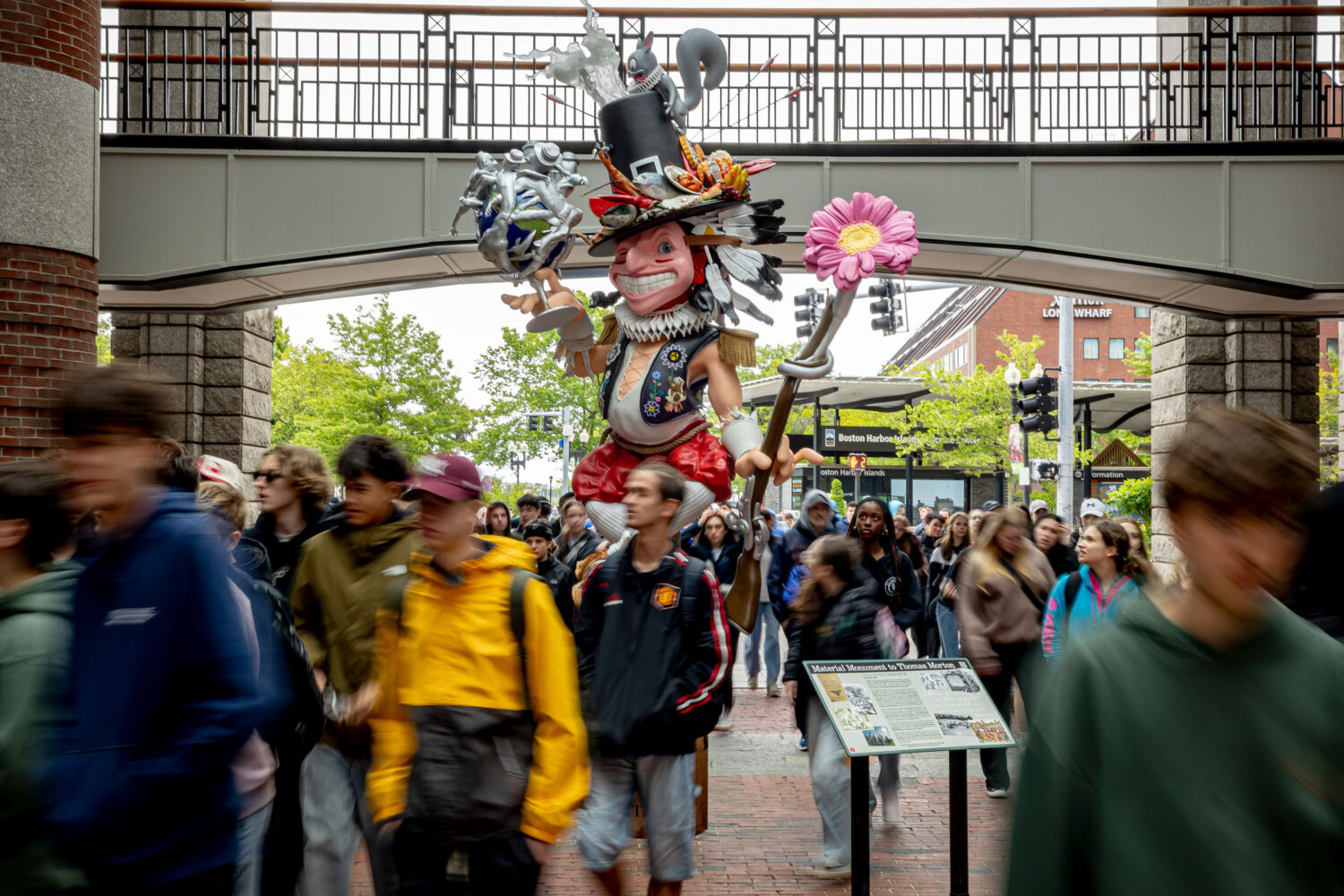Last year, with funding from the Barr Foundation, the Metropolitan Area Planning Council (MAPC), Greater Boston’s regional planning agency, hired Carolyn Lewenberg as its first artist-in-residence. The goal of the MAPC Artist-in-Residence Program is to bring arts, culture, and creativity into the agency’s multidisciplinary planning work with cities, towns, and other organizations. By tapping the talents and perspectives of a visiting artist, the residency aims to infuse arts, culture, and creativity into project scoping and implementation while enriching and expanding the creative practice of the visiting artist. This post is excerpted and adapted from a longer version (which also features images and descriptions of Carolyn’s projects) published by MAPC.
The end of my residency has prompted a lot of reflection on where I am now versus where I was when it began, 18 months ago, and how this experience has shaped my practice as a public artist. Prior to my work at MAPC, my bread and butter was working as an educator and youth worker while making studio art and public art projects on the side, attempting as often as I could to integrate this into my work with young people. Having the last 18 months to work solely on public art projects has been an enormous privilege, and I’m excited to leap out of the nest of MAPC into freelancing with some fresh new skills and approaches.
Over the last 18 months, I’ve worked with 10 different planners at the agency (in a variety of departments – from Land Use, Public Health, Environment, Government Affairs, and Strategic Initiatives). I was also involved in project development conversations with Municipal Collaboration, Transportation, Clean Energy, and Data Services. To see images and read descriptions of all the projects I worked on, visit my reflection for MAPC.
It was an honor to work on these dynamic projects with such highly motivated, passionate, and gifted individuals as the first Artist-in-Residence at MAPC. Many of these projects grew out of the conversations I had in the first couple months of my residency when I met with directors from all the dynamic practice areas at MAPC about how they imagined arts and culture could be woven into their work. I was inspired by the depth and breadth of their focus areas, and excited about the different possibilities of how we could collaborate. The opportunity not only to imagine possibilities together but to put the ideas into action was very special.

Pictured above: Participants create watercolor art to share the places they value most in Rockland, Massachusetts at the Rockland Farmer’s Market. Carolyn worked with MAPC’s Arts and Culture team on this community engagement effort.
Prior to this experience, I hadn’t really considered how different it would be to practice out of a government planning agency instead of a studio environment, as studio space was not a resource that MAPC offered. Instead of my studio-based practice of playing with materials, exploring a site, having conversations with people who have personal connections with a place and allowing an inclusive process to emerge, at MAPC the experimentation and play happened through collaborative conversations with planners whose perspectives were supported by research and data. Once the general vision for the project was articulated, I would then connect with the community. The artistic process was highly structured in advance of community engagement. I struggled to navigate this process in a way that would allow for flexibility once community engagement began. Throughout, I learned what community members and resources would support the work and offer new directions that made sense for the process, product, and site.
The most challenging aspect of adjusting to working at a planning agency was accounting for time in an hourly way and figuring out what code to bill it to, and working primarily in an office environment. Adjusting to the workplace culture at MAPC called for a very different process that naturally called for more planning, which stretched my abilities and allowed for great professional development. Instead of the work emerging from an organic artmaking process over time, within a budget, approval to go ahead on projects required detailed plans for implementation, and how much time it would likely take to produce the work. I realized that this approach positioned me to hand off the fabrication to another person, which expanded my capacity to take on more projects. I learned project management skills that I will carry forward.

Pictured above: “A Ripple Effect” or “Everett Earthworks”, a community-engaged public art and urban agriculture project. This project was a collaboration between the City of Everett, the Everett Community Growers, and MAPC.
What’s Next?
As I peer over the nest of MAPC and think about the direction and style of my flight, I’d like to thank of all the people at MAPC who offered their collaborative spirit and strengthened my practice. I also think about so many people outside MAPC I had the privilege to work with: I think of the teens in Everett with neon orange shirts applying polyurethane to the waterdrop sculpture, people sharing their collages at creative placemaking workshops, and guests from Providence talking about public health at the discussion series. I’ve gotten to meet so many community members, leaders, and youth who shape our region. It’s been such a rich residency, and I am grateful for this experience.
My creative direction will include more Creative Placemaking projects, Green Infrastructure projects, and Spirit of Place commissions. Specific upcoming projects include:
- Organizing the Boston Harbor [Re]creation Artist in Residency program. For more info visit Boston Harbor Now’s website.
- Contracting with MAPC on future projects. These include:
- Climate Perspectives, a series of focus groups and a participatory art installation on the topic of climate change with new MAPC Artist-in-Residence Hortense Gerardo and public health planners
- The final phase of a creative placemaking project in Rockland
For more about her work and future projects, visit Carolyn’s website.
The Metropolitan Area Planning Council (MAPC) is the regional planning agency serving the people who live and work in the 101 cities and towns of Metropolitan Boston. A public agency, its mission is to promote smart growth and regional collaboration. With its regional plan, MetroFuture, MAPC engages the public in responsible stewardship of our region’s future.
